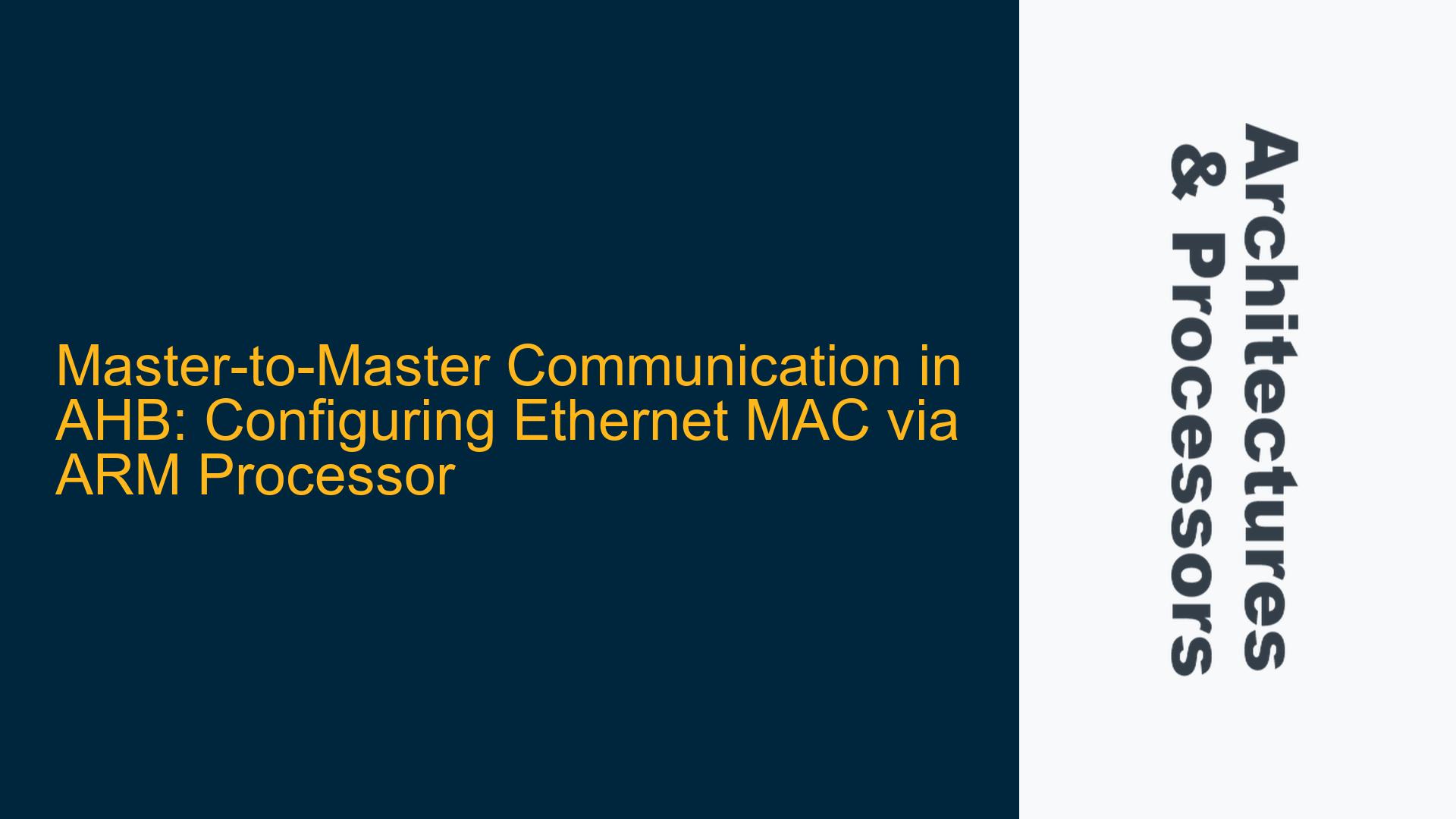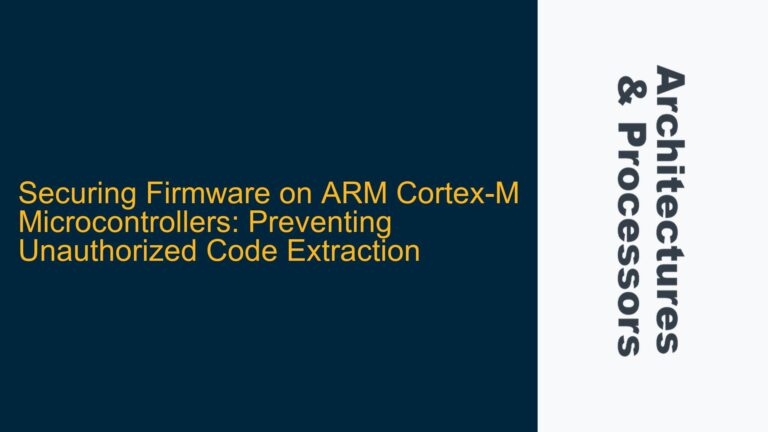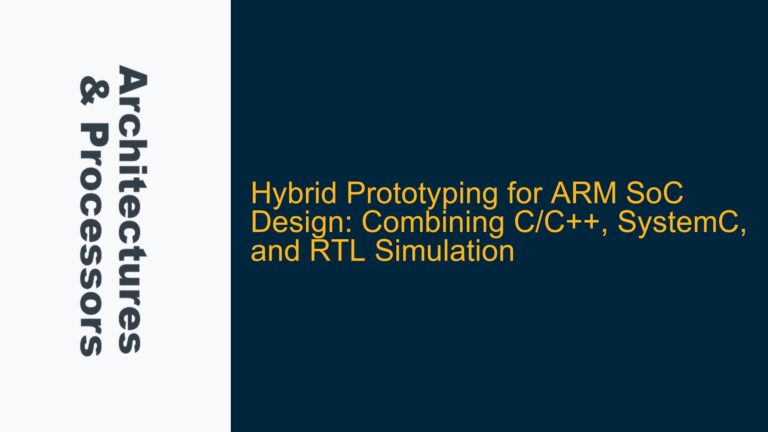ARM Processor and Ethernet MAC Configuration on AHB Bus
In embedded systems utilizing the Advanced High-performance Bus (AHB) architecture, a common scenario involves multiple masters communicating with various slaves. One such configuration includes an ARM processor and an Ethernet MAC (Media Access Control) as masters on the AHB bus. The Ethernet MAC is responsible for generating Ethernet packets, and the ARM processor is tasked with configuring the Ethernet MAC. However, the AHB protocol does not natively support direct master-to-master communication. This limitation necessitates a specific architectural approach to enable the ARM processor to configure the Ethernet MAC effectively.
The ARM processor, as a master, can access the Ethernet MAC’s configuration registers if the Ethernet MAC incorporates an AHB slave interface. This setup allows the ARM processor to write to and read from the Ethernet MAC’s register space, thereby configuring it. The Ethernet MAC, in turn, uses its AHB master interface to initiate DMA (Direct Memory Access) transfers or other bus transactions as needed. This dual-interface design is crucial for enabling the ARM processor to control the Ethernet MAC while allowing the Ethernet MAC to perform its primary function of packet generation and transmission.
The absence of an AHB slave interface on the Ethernet MAC would prevent the ARM processor from configuring it directly. Therefore, the Ethernet MAC IP must include an AHB slave interface to facilitate this configuration. Most industry-standard Ethernet MAC IPs come equipped with both AHB master and slave interfaces, ensuring compatibility with AHB-based systems and enabling seamless integration with ARM processors.
AHB Slave Interface Requirement for Ethernet MAC IP
The core issue revolves around the necessity of an AHB slave interface on the Ethernet MAC IP to allow the ARM processor to configure it. Without this interface, the ARM processor cannot access the Ethernet MAC’s register space, rendering it unable to configure the Ethernet MAC for packet generation. The AHB slave interface acts as a bridge, enabling the ARM processor to communicate with the Ethernet MAC as if it were a slave device.
The Ethernet MAC’s AHB slave interface must be designed to handle read and write transactions from the ARM processor. These transactions typically involve accessing configuration registers that control various aspects of the Ethernet MAC’s operation, such as MAC address configuration, packet size, and transmission parameters. The AHB slave interface must also ensure that these transactions are completed within the timing constraints of the AHB protocol, maintaining the integrity and performance of the overall system.
In addition to the AHB slave interface, the Ethernet MAC may also include an AHB master interface if it supports features like internal DMA. The AHB master interface allows the Ethernet MAC to initiate bus transactions independently, such as reading packet data from memory or writing received packets to memory. This dual-interface design is essential for enabling the Ethernet MAC to function autonomously while still being configurable by the ARM processor.
The absence of an AHB slave interface on the Ethernet MAC would necessitate alternative approaches, such as using a shared memory region or a secondary bus, to enable configuration by the ARM processor. However, these approaches introduce additional complexity and potential performance bottlenecks, making the inclusion of an AHB slave interface the preferred solution.
Implementing AHB Slave Interface for Ethernet MAC Configuration
To enable the ARM processor to configure the Ethernet MAC, the Ethernet MAC IP must implement an AHB slave interface. This interface must be designed to handle the specific requirements of the AHB protocol, including address decoding, data transfer, and response generation. The following steps outline the key considerations and implementation details for integrating an AHB slave interface into the Ethernet MAC IP.
Address Decoding and Register Mapping: The AHB slave interface must include address decoding logic to map the ARM processor’s transactions to the appropriate configuration registers within the Ethernet MAC. This involves defining a register map that specifies the address range for each configuration register. The address decoding logic must ensure that each register is accessible at its designated address and that the ARM processor can read from and write to these registers as needed.
Data Transfer and Timing: The AHB slave interface must support the data transfer requirements of the AHB protocol, including single and burst transfers. The interface must also adhere to the timing constraints of the AHB protocol, ensuring that read and write transactions are completed within the required number of clock cycles. This may involve implementing pipelining or other timing optimization techniques to meet the performance requirements of the system.
Response Generation: The AHB slave interface must generate appropriate responses to the ARM processor’s transactions, including success, error, and retry responses. The interface must also handle any error conditions that may arise during the transaction, such as invalid addresses or data corruption. The response generation logic must ensure that the ARM processor receives accurate feedback on the status of each transaction, enabling it to take appropriate action if necessary.
Integration with Ethernet MAC Logic: The AHB slave interface must be seamlessly integrated with the Ethernet MAC’s internal logic to ensure that configuration changes made by the ARM processor are correctly applied. This involves connecting the AHB slave interface to the Ethernet MAC’s control and status registers, as well as any other relevant internal signals. The integration must ensure that the Ethernet MAC responds appropriately to configuration changes, such as updating its packet generation parameters or resetting its internal state.
Verification and Testing: Once the AHB slave interface is implemented, it must be thoroughly verified and tested to ensure that it functions correctly within the overall system. This involves simulating the ARM processor’s transactions and verifying that the Ethernet MAC’s configuration registers are accessed correctly. The testing process must also include stress testing to ensure that the AHB slave interface can handle high transaction rates and complex scenarios without errors.
By following these steps, the Ethernet MAC IP can be equipped with an AHB slave interface that enables the ARM processor to configure it effectively. This implementation ensures that the Ethernet MAC can be seamlessly integrated into AHB-based systems, allowing the ARM processor to control its operation while enabling the Ethernet MAC to perform its primary function of packet generation and transmission.
In conclusion, the key to enabling master-to-master communication in AHB-based systems lies in the proper implementation of an AHB slave interface on the Ethernet MAC IP. This interface allows the ARM processor to configure the Ethernet MAC, ensuring that it can generate Ethernet packets as required. By addressing the architectural and implementation considerations outlined above, developers can achieve a robust and efficient solution for configuring Ethernet MACs in AHB-based embedded systems.






